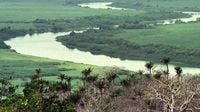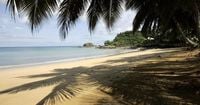On September 27, 2025, UNESCO announced the addition of 26 new biosphere reserves across 21 countries, a move that underscores both the urgency of the planet’s biodiversity crisis and the growing need for climate resilience. The decision, made public at the 36th session of UNESCO’s International Coordinating Council for the Man and the Biosphere (MAB) Programme in Hangzhou, China, brings the global network to 785 biosphere reserves spanning 142 nations since its inception in 1971, according to The Associated Press.
These newly designated reserves are not just patches of untouched wilderness. Instead, they represent a dynamic blend of protected nature, scientific research, and sustainable human activity. The goal, as António Abreu, head of UNESCO’s MAB Programme, put it, is to ensure that "biodiversity conservation is a pillar of socioeconomic development and can contribute to the economy." He warned that "conflict and misunderstanding can result if local communities are left out of decision-making and planning," highlighting the importance of involving residents alongside scientists and government officials in both conservation and day-to-day management.
Among the most striking additions is Indonesia’s Raja Ampat archipelago. Spanning 52,000 square miles (135,000 square kilometers), Raja Ampat is home to over 75% of the world’s known coral species—a staggering figure that cements its status as a global marine biodiversity hotspot. The area also harbors lush rainforests and nesting grounds for endangered sea turtles. Local economies here revolve around fishing, aquaculture, small-scale agriculture, and an increasingly vital tourism sector, as noted by UNESCO.
Heading north, Iceland’s Snæfellsnes Biosphere Reserve offers a dramatic contrast. The 1,460-square-kilometer (564-square-mile) reserve on the country’s west coast features volcanic peaks, sprawling lava fields, wetlands, grasslands, and the iconic Snæfellsjökull glacier. It’s a haven for seabirds, seals, and—remarkably—over 70% of Iceland’s native plant species, including 330 types of wildflowers and ferns. More than 4,000 people call this landscape home, relying on fishing, sheep farming, and tourism to sustain their livelihoods.
In Africa, Angola’s Quiçama Biosphere Reserve stretches 206 kilometers (128 miles) along the Atlantic coast. This "sanctuary for biodiversity," as UNESCO describes it, encompasses savannahs, forests, floodplains, estuaries, and islands. It supports elephants, manatees, sea turtles, and more than 200 bird species. Local communities are deeply involved in livestock herding, farming, fishing, and honey production, making them indispensable partners in conservation efforts.
The biosphere reserve concept, as outlined by UNESCO, is intentionally broad. It integrates core protected zones with buffer areas for research and education, and transition zones where sustainable economic activities—such as eco-tourism, agroforestry, and fisheries—are encouraged. This approach reflects a growing recognition that conservation and human development must go hand in hand, especially as climate change and biodiversity loss accelerate worldwide.
But this balance is fragile. As reported by AP and other outlets, at least 60% of UNESCO biosphere reserves have already been affected by climate change-related extreme weather, including heatwaves, droughts, and sea-level rise. These impacts are not abstract: they threaten the very ecosystems and communities that biosphere reserves are designed to protect. To address these mounting threats, UNESCO is deploying satellite monitoring and computer modeling to track changes in coastal and terrestrial zones, and is digitizing decades of ecological data to support evidence-based management.
Local communities are not just passive beneficiaries—they are active drivers of change. António Abreu emphasized this point, stating, "Communities are not just stakeholders—they are essential partners." In the Philippines, for example, the coral reefs around Pangatalan Island had been devastated by dynamite fishing. Scientists, working closely with local fishermen, designed structures to help coral reefs regrow and introduced aquaculture techniques. As Abreu explained, "They have food and they have also fish to sell in the markets," demonstrating how ecological restoration can directly improve livelihoods.
In São Tomé and Príncipe, a small African island nation, the biosphere reserve on Príncipe Island has led to the restoration of mangroves. These vital coastal habitats buffer against storm surges and provide crucial breeding grounds for wildlife. The restoration has also spurred ecotourism, with new biosphere trails and bird-watching tours attracting visitors. In a notable triumph for both science and the local economy, a new species of owl was recently identified there. This year, the entire island of São Tomé was added as a biosphere reserve, making São Tomé and Príncipe the first country to be entirely encompassed by such a designation.
Yet, human pressures continue to threaten even the most protected sites. In Nigeria’s Omo Forest Reserve—one of Africa’s oldest and largest UNESCO biosphere reserves and a critical refuge for the endangered African forest elephant—the expansion of cocoa farming is driving deforestation and habitat fragmentation. The forest’s survival is not just a matter of local concern; it plays a significant role in combating climate change by storing carbon and maintaining regional rainfall patterns.
The United States, meanwhile, finds itself at a crossroads. With 47 biosphere reserves—most located in federally protected areas—the U.S. has been a major player in the global biosphere network. However, as announced by the Trump administration and reaffirmed this year, the U.S. will withdraw from UNESCO as of December 2026, citing national interest concerns. This move has raised alarms among conservationists and international partners who fear it could undermine cross-border cooperation on environmental protection. As the world grapples with biodiversity loss and climate change, the absence of the U.S. from UNESCO’s framework may complicate efforts to share research, best practices, and coordinated responses to global challenges.
Despite these hurdles, UNESCO officials remain optimistic. The expansion of the biosphere network, they argue, signals a renewed commitment to the intertwined goals of biodiversity conservation, climate adaptation, and sustainable development—goals that are central to the United Nations’ post-2020 Global Biodiversity Framework. As António Abreu and his colleagues continue to stress, the future of the world’s most precious ecosystems hinges on collaboration, innovation, and the willingness to see people and nature as partners rather than adversaries. The story of these 26 new biosphere reserves is not just about protection—it’s about possibility.


